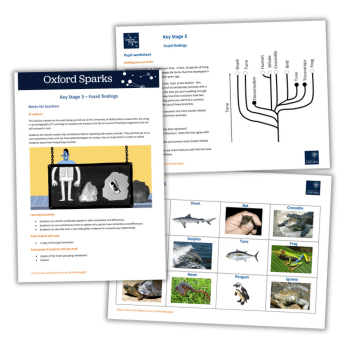This activity focuses on vertebrates, evolutionary trees and evolutionary relationships. It’s based on the work being carried out at The University of Oxford where researchers are using x-ray tomography (CT scanning) to visualise and measure the 3D structures of fossilised organisms that are still encased in rock.
Students will classify modern-day vertebrates before repeating with extinct animals. They will then go on to use evolutionary trees and see how palaeontologists are using x-rays to study fossils in order to collect evidence about how living things evolved.
Learning objectives
- Classify vertebrates based on their similarities and differences
- Use evolutionary trees to explain why species have similarities and differences
- Describe how x-rays help gather evidence for evolutionary relationships
Starter activity
Tell the class that they are related to fish! Show them images of the external and internal features of fish (or you could even demonstrate a fish dissection).
Ask them to work in pairs or small groups and write down some similarities and differences between humans and fish.
Discuss what they have found out. Ask the class to suggest why we have some common features. They may already have some ideas about evolution and common ancestors.
Oxford Sparks is a portal for engaging with a wealth of exciting science taking place across Oxford University. Follow on X at @OxfordSparks.











